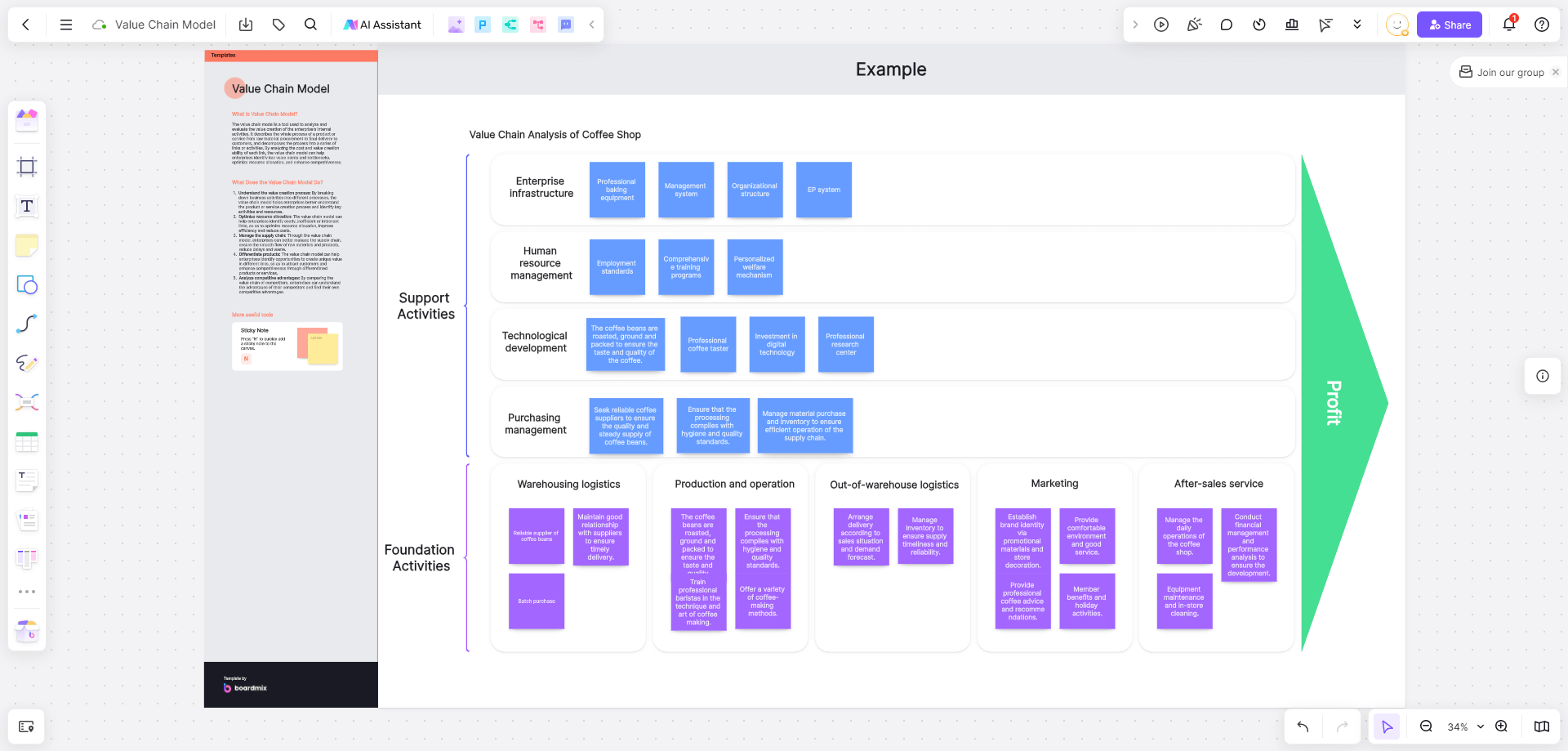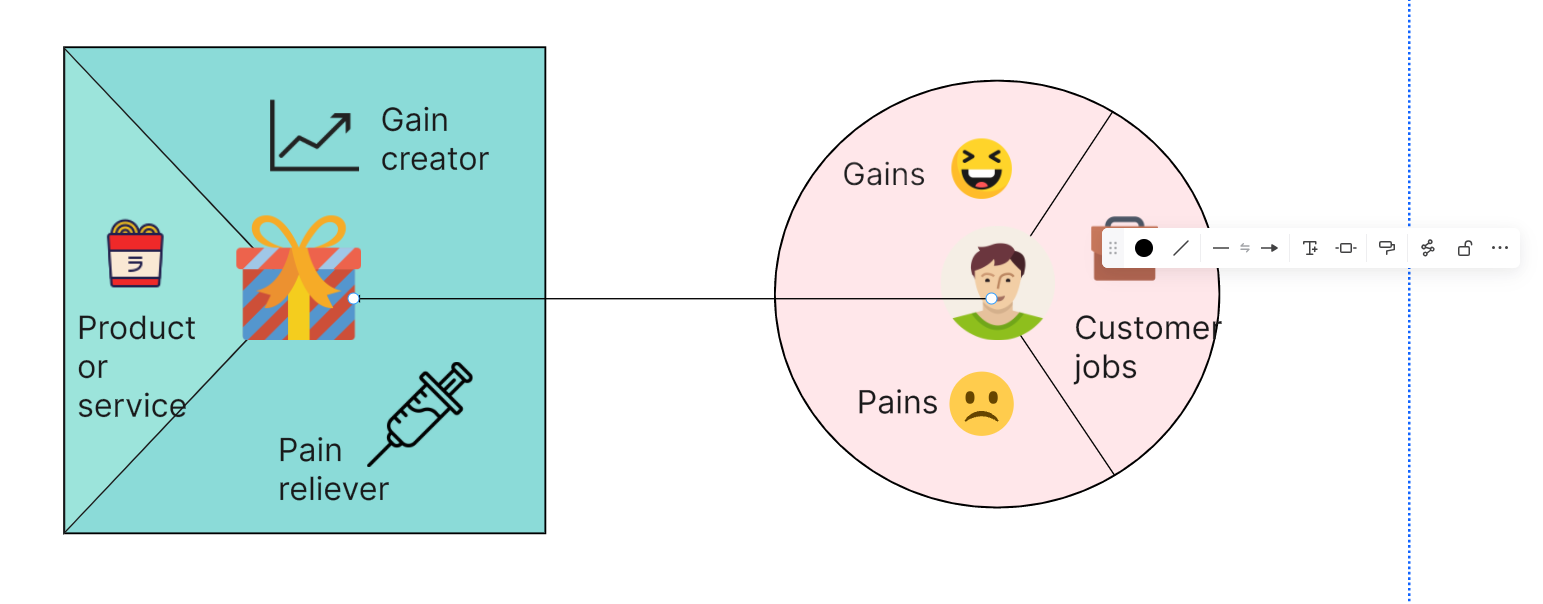In a highly competitive market, for a company to gain a greater advantage, it must provide customers with more unique, high-quality product value or services. How can the flow and direction of product value be visualized to pursue reliable and scientific decision-making? The value chain diagram is the "expert" in solving this problem.
What is a Value Chain Diagram?

A value chain diagram is a tool to implement the "Value Chain Analysis" method designed by Michael Porter, a renowned strategist from Harvard Business School. A value chain diagram can clearly show the steps a company takes to produce products that meet market needs or provide services that customers require. The value chain diagram resembles a sharp arrow, always pointing to the most dazzling part of production—the value output, which is profit.
According to Michael Porter’s value chain analysis, profit generation requires the support of both support activities and primary activities. Support activities include company infrastructure, human resource management, technology development, and procurement/packaging. Primary activities include inbound logistics, production, outbound logistics, marketing and sales, and service.
How to Draw a Value Chain Diagram
How can you create a clear and informative value chain diagram? The first step is to choose a simple and user-friendly whiteboard tool. This article uses the Boardmix online whiteboard as an example to draw a value chain diagram.
Typically, tools for drawing office diagrams need to be lightweight and feature a combination of simplicity and powerful functionality. The Boardmix online whiteboard can be used simply by opening a webpage, offering robust drawing capabilities, and real-time draft saving to prevent data loss. Open the Boardmix online whiteboard website and follow the tutorial below.
Once you enter the workspace, you can create a new whiteboard to start your value chain diagram journey. The classic value chain diagram is divided into a table, with horizontal divisions representing production support activities and vertical divisions representing primary production activities.
In this process, we will use the "Shapes" feature from the left toolbar of the Boardmix whiteboard, which includes the basic shapes needed for office diagrams. Select the two "arrow-shaped" icons as shown below. After building the shapes, add prominent background colors and use white connecting lines to demarcate the sections.
After drawing the table, we can click the left toolbar to add text boxes, allowing each activity function to be displayed, with the ultimate goal of maximizing value for every company. Label each activity as shown below, and the basic value chain diagram is complete.
The next task is to refine each production activity block according to the actual situation of each enterprise. According to Porter, the specific scope of main chain activities includes:

Inbound Logistics: Acquiring raw materials and guiding them to the production center.
Production: Transforming raw materials into final products that have greater value than the materials themselves.
Outbound Logistics: Distributing processed products to wholesalers, retail locations, and ultimately to end customers.
Marketing and Sales: Increasing awareness of the product or service, attracting new customers, and ensuring continuous revenue streams.
Service: Providing customer assistance beyond the purchase itself, from in-store help to regular maintenance.
Support activities can be refined based on the enterprise's circumstances, such as company infrastructure, office environment, and warehouse capacity. For technology development, clarify development directions, main features, and user demographics. To detail these activities, expand the activity blocks in the value chain diagram and use smaller or differently colored fonts to indicate specifics.
Given the uniqueness of office diagrams, the Boardmix online whiteboard also supports video conferencing and comment list features, making real-time interaction simple and vivid, eliminating the cumbersome steps of offline meetings, and the flexibility of online meetings might spark more innovative ideas.
Application Scenarios of the Value Chain Diagram

When an enterprise is struggling to seek product value addition and expand its advantage, try drawing a value chain diagram to examine the flow of value and each production stage. This approach can help the enterprise quickly retrieve each production stage, observe which stage is not creating the expected value, or is affecting the realization of value in subsequent stages.
As shown in the enterprise collaborative value chain diagram below, each production stage has specific responsibilities, and the step-by-step value chain makes the enterprise's development visible.
The value chain diagram is not only favored by large enterprises; on the contrary, it is very "down-to-earth" and is particularly important during the startup phase. Establishing a competitive advantage is crucial at the initial stage of a business, and listing a straightforward development chart is always clearer than sifting through piles of data reports.
The value chain diagram can help visualize complex processes, identify resource losses, control cost-intensive production stages, and seek differentiation advantages, providing your customers with a unique product experience. Every enterprise should conduct at least one value chain analysis to make the flow of value among production stages clear and seize any opportunity to expand its competitive advantage.
Collaborating on a value chain diagram using the Boardmix whiteboard will bring substantial benefits to your team and company.








